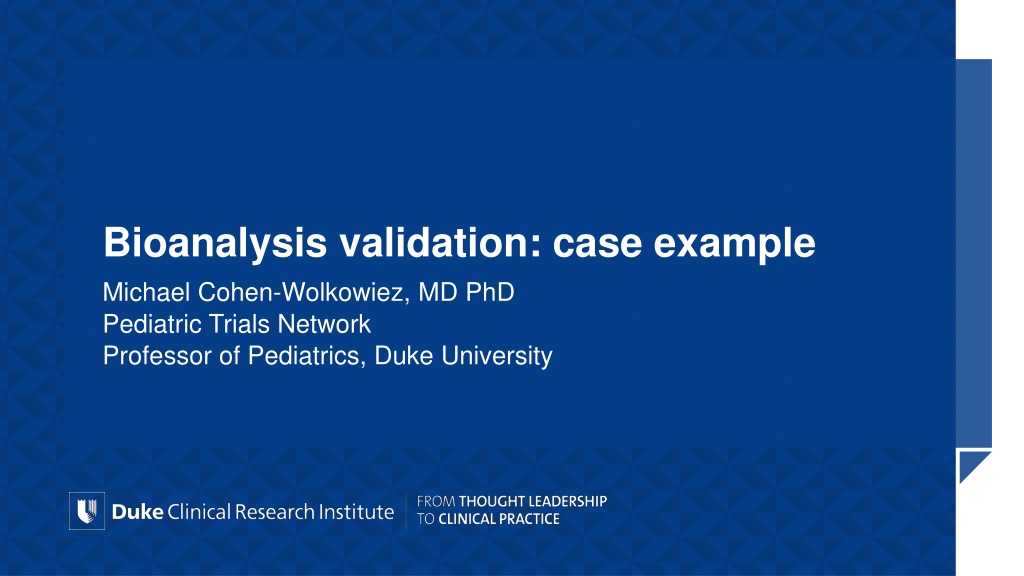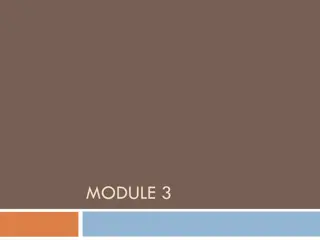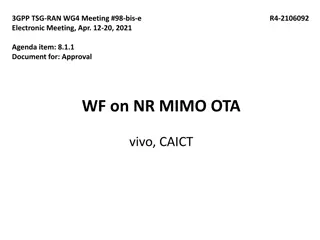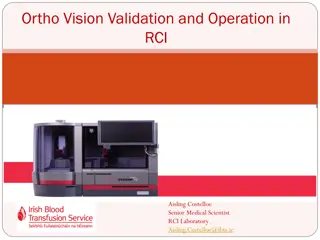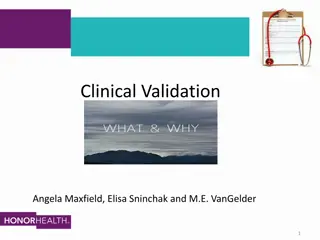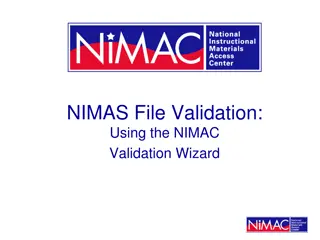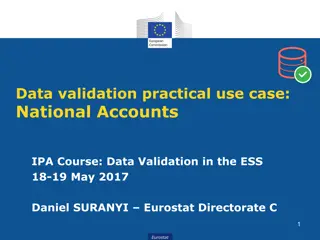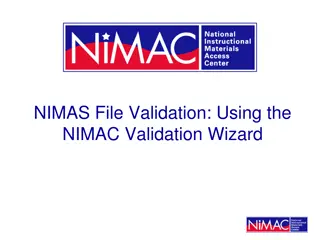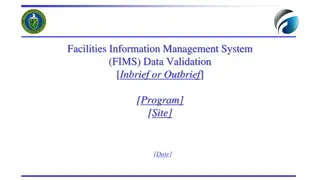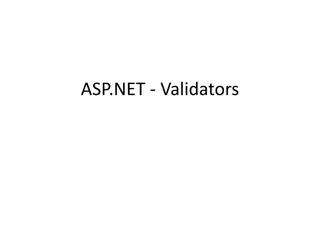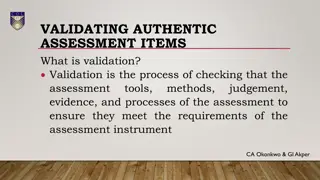Bioanalysis Validation Case with Michael Cohen-Wolkowiez at Duke University
Michael Cohen-Wolkowiez, MD PhD, a Pediatric Trials Network Professor at Duke University, conducted a bioanalysis validation case study involving Meropenem in infants funded by NIH. The study focused on PK and safety data for FDA registration consideration. High-level results showed significant differences in clearance rates and volumes among different cohorts. FDA observations highlighted issues with QC sample preparation and analytical run rejection. Recommendations included improving sample stability and adherence to QC standards. Action and results from the study revealed variations in pharmacokinetic parameters in relation to gestational and postnatal age. Key tips emphasized FDA guidance, blood volume considerations, and lower limits of quantification in bioanalysis.
- Bioanalysis Validation
- Michael Cohen-Wolkowiez
- Pediatrics
- Meropenem Study
- FDA
- PK
- Safety
- QC
- Pharmacokinetics
Uploaded on Sep 30, 2024 | 0 Views
Download Presentation

Please find below an Image/Link to download the presentation.
The content on the website is provided AS IS for your information and personal use only. It may not be sold, licensed, or shared on other websites without obtaining consent from the author. Download presentation by click this link. If you encounter any issues during the download, it is possible that the publisher has removed the file from their server.
E N D
Presentation Transcript
Bioanalysis validation: case example Michael Cohen-Wolkowiez, MD PhD Pediatric Trials Network Professor of Pediatrics, Duke University
Background Meropenem study 188 infants PK and safety NIH funded ($~5M) Registration to FDA for labeling consideration Bioanalysis information Blood volume: appropriate FDA standards?
Meropenem study: high level results Cohort 1 Cohort 2 Cohort 3 Cohort 4 GA <32 weeks, GA <32 weeks, GA 32 weeks, GA 32 weeks, Parameter Overall PNA <14 days PNA 14 days PNA <14 days PNA 14 days (20mg/kg q12h) (20mg/kg q8h) (20mg/kg q8h) (30mg/kg q8h) CL (L/h/kg) 0.089 0.122 0.135 0.202 0.119 V (L/kg) 0.489 0.467 0.463 0.451 0.468 T1/2 (h) 3.82 2.68 2.33 1.58 2.68 Cmin(ss) ( g/mL) 5.4 6.7 4.8 2.1 5.7 CL = 0.122 X (0.5/SCR)0.267X (PMA/32.7)1.46 SCR: serum creatinine; PMA: postmenstrual age
FDA observations and recommendations Anticoagulant used for QC and calibration standard preparation different from patient samples Stability samples used for freeze/thaw and bench top stability not compared against freshly prepared references Failure to use appropriate QC sample concentrations Failure to reject analytical runs when low concentration QCs were outside 15% of their nominal value Recommendation: clinical trial data unacceptable
Action and results MBPCA_AUG10_143_004 MBPCA_AUG10_143_004O RE (%) 200 753 0.46 0.122 0.267 1.46 -0.44 Lab 1 188 28 (23-40) 22 (1-92) 0.5 (0.1-1.9) 2.3 (1.0-4.5) Lab 2 171 28 (23-40) 23 (1-92) 0.4 (0.1-1.9) 2.3 (1.0-4.5) N Concentration records PopV PopCL COV1 (SCR) COV2 (PCA) COV3 (ALB) 200 563 0.42 0.112 0.259 1.23 -0.52 NA NA -9.1 -8.2 -3.0 -15.8 16.4 N Gestational age (weeks) Postnatal age (days) Serum creatinine (mg/dL) Albumin (g/dL) Lab 2 Lab 1
Tips: big ticket items FDA guidance for bioanalysis Blood volume Anticoagulant Concentration range Lower limit of quantification (LLOQ)
